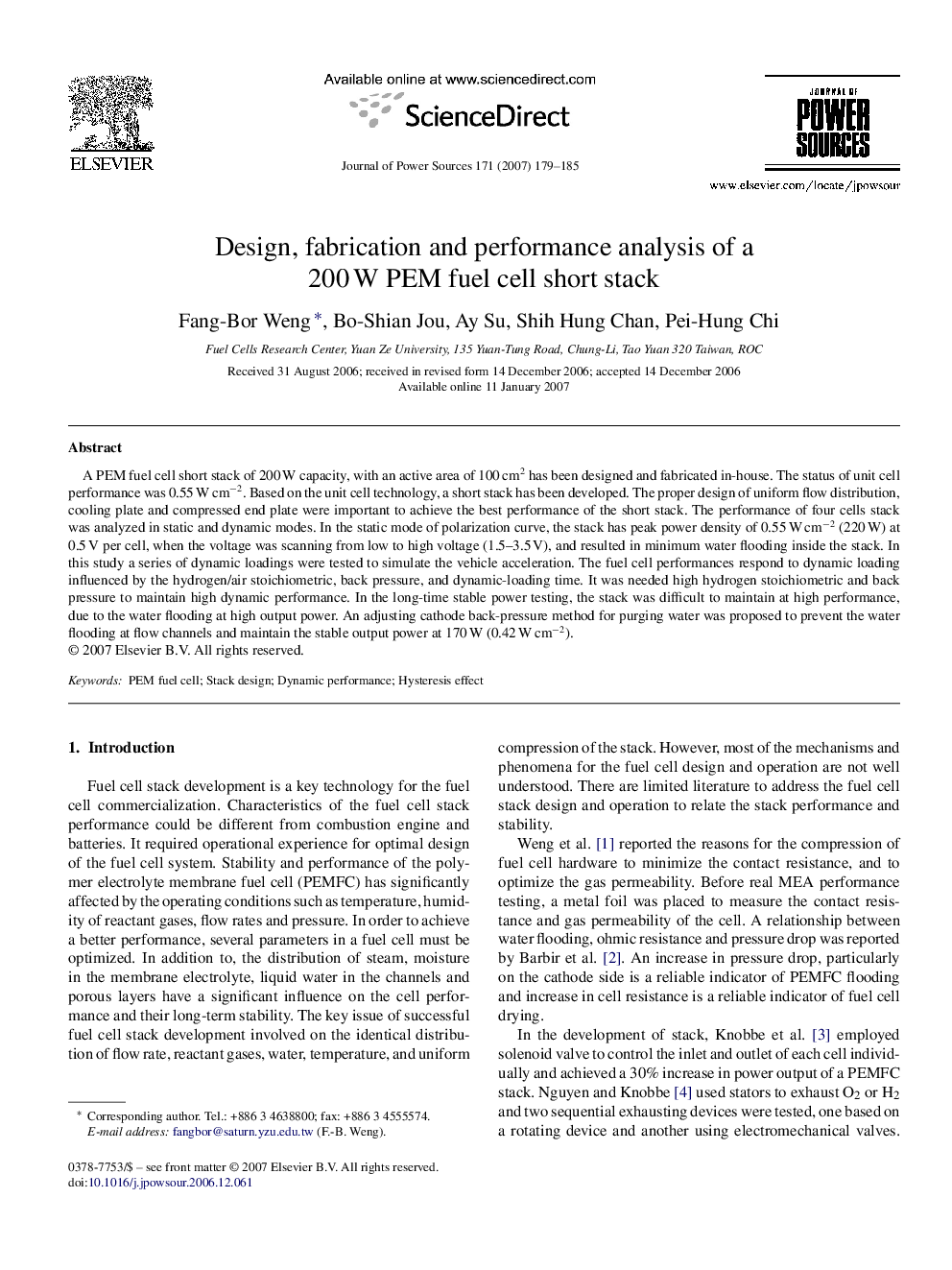| Article ID | Journal | Published Year | Pages | File Type |
|---|---|---|---|---|
| 1291272 | Journal of Power Sources | 2007 | 7 Pages |
A PEM fuel cell short stack of 200 W capacity, with an active area of 100 cm2 has been designed and fabricated in-house. The status of unit cell performance was 0.55 W cm−2. Based on the unit cell technology, a short stack has been developed. The proper design of uniform flow distribution, cooling plate and compressed end plate were important to achieve the best performance of the short stack. The performance of four cells stack was analyzed in static and dynamic modes. In the static mode of polarization curve, the stack has peak power density of 0.55 W cm−2 (220 W) at 0.5 V per cell, when the voltage was scanning from low to high voltage (1.5–3.5 V), and resulted in minimum water flooding inside the stack. In this study a series of dynamic loadings were tested to simulate the vehicle acceleration. The fuel cell performances respond to dynamic loading influenced by the hydrogen/air stoichiometric, back pressure, and dynamic-loading time. It was needed high hydrogen stoichiometric and back pressure to maintain high dynamic performance. In the long-time stable power testing, the stack was difficult to maintain at high performance, due to the water flooding at high output power. An adjusting cathode back-pressure method for purging water was proposed to prevent the water flooding at flow channels and maintain the stable output power at 170 W (0.42 W cm−2).
